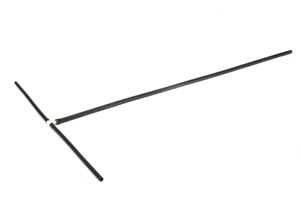Rubber Vulcanization Capabilities
What are Kismet's Rubber Vulcanization Capabilities?
Kismet Rubber Products offers a range of curing methods such as our rubber vulcanizing capabilities to prepare the rubber used to manufacture your part for processing. With over 60 years of experience, our staff is expert in determining the best curing and manufacturing method for your product, ensuring reliable, high performance of the finished part at a cost-effective price. We are also ISO 9001:2015 Certified. Read more to learn more about our rubber vulcanization capabilities.
Uncured rubber deforms easily when it is warm and is brittle when cold. In its natural state, it does not exhibit the properties that make it a flexible, valuable material for many finished products. Curing, also known as vulcanization, causes the long polymer chains that rubber is composed of to become crosslinked. This prevents the chains from moving independently, allowing the material to stretch under stress and then return to its original shape when the stress is released. The different curing methods available involve heating the rubber after a curing additive has been added to the compound. Kismet's rubber vulcanizing capabilities include the vulcanization methods, listed below.

Rubber Vulcanization Methods
What are the types of Rubber Vulcanization Curing Methods offered by Kismet?
- Continuous cure – Used for continuous processing operations, microwave curing and salt curing provide vulcanization for rubber compounds that are electrically conductive. The microwave cures the rubber from the inside out, curing the rubber quickly and evenly. Salt is excellent for curing due to its relatively short-length curing units. Salt bath curing has good heat exchange properties and can be used at extremely high temperatures.
- HAV systems – Hot air vulcanization is a continuous process that provides uniform curing at high production speeds. The continuous circulation of hot, damp air over the parts provides fast, complete vulcanization. HAV is recommended for many modern rubber compounds, as well as silicone.
- Steam Cure – Autoclave (steam) curing is used for discontinuous processing operations. It is used for large extruded and hand-built products, involves manual processing.
Microwave and HAV systems allow for tighter tolerances and the manufacture of longer-length parts in a fast production operation. Microwave and HAV systems can also be done on complex profiles.
At Kismet Rubber, we understand that the quality of your finished product relies on the components you choose. We are committed to manufacturing your parts to the highest standards, ensuring that your Kismet component will meet or exceed your expectations for rubber vulcanizing capabilities.
Call today at 706-426-0400 to see how we can be of assistance.